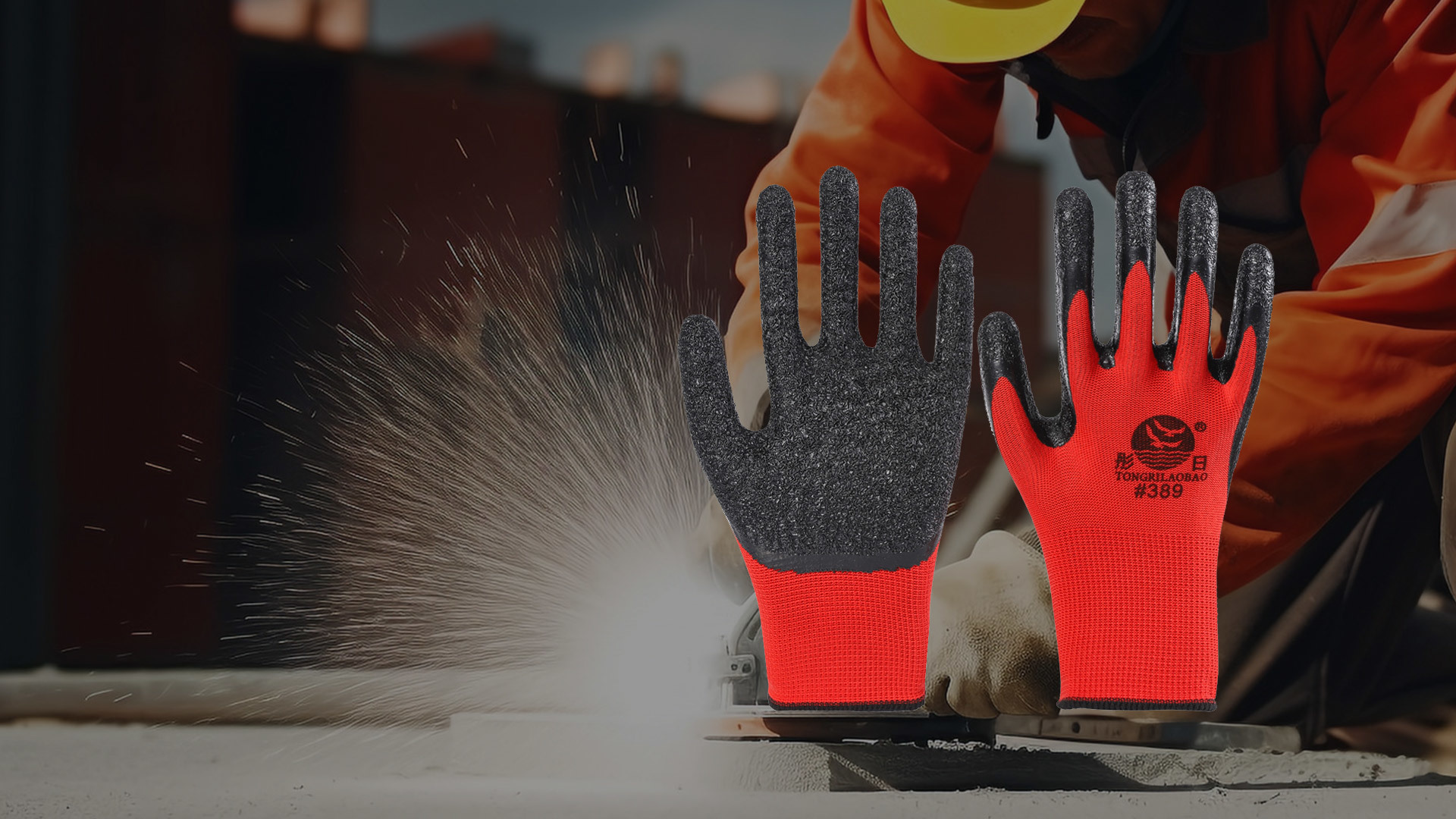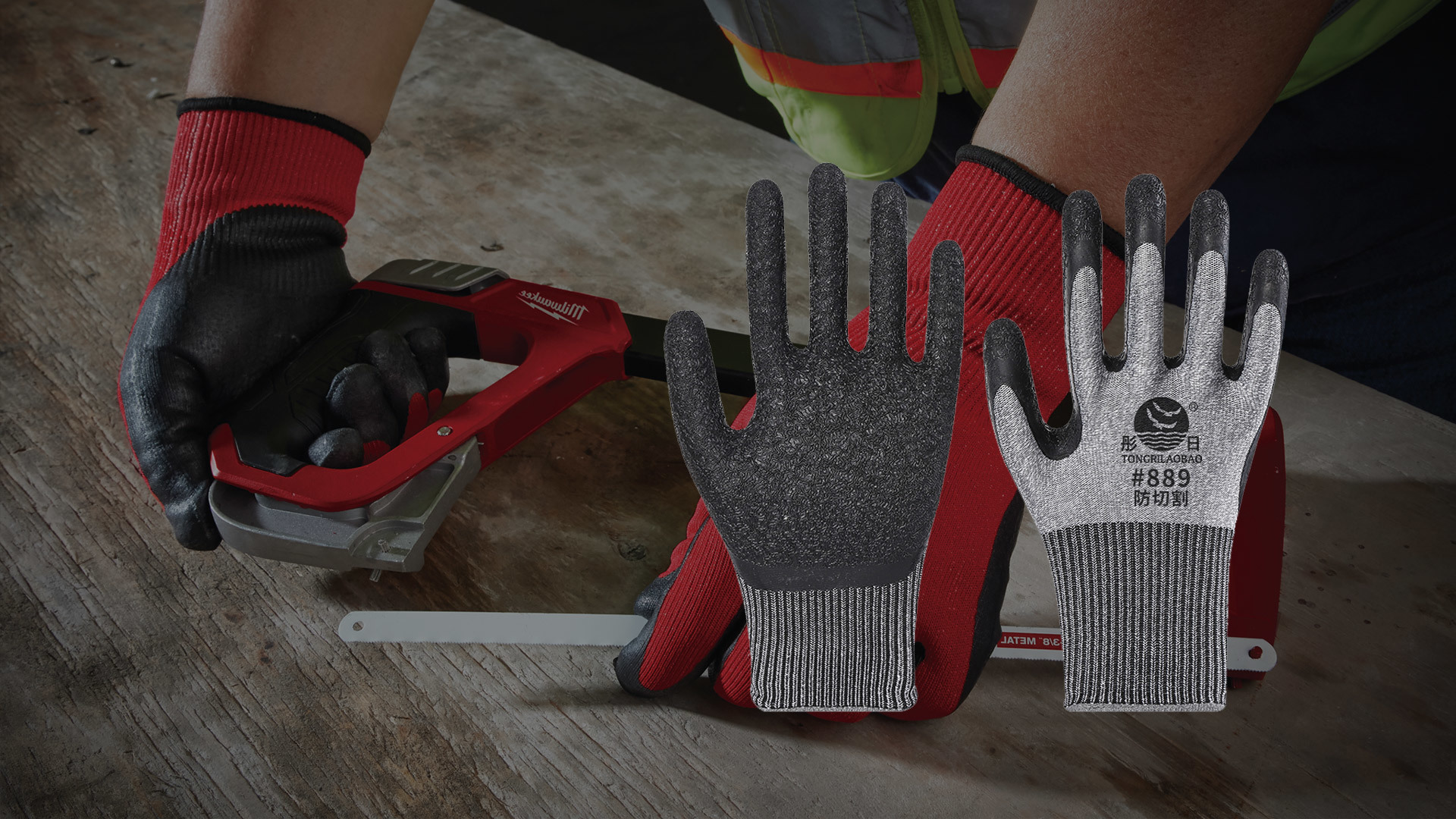How to select and use labor protection gloves based on their types and functions
2023-08-04
Types and functions of labor protection gloves
1. Insulated gloves for live working
A type of insulating glove worn by operators during live working on electrical equipment (or corresponding voltage level DC electrical equipment) with an AC voltage of 10 kV or below, which serves as electrical insulation. The product model, external dimensions, and technical requirements must comply with the provisions of the "General Technical Conditions for Insulating Gloves for Live Working".
Gloves must have good electrical insulation characteristics. At the same time, it also requires good tensile strength and elongation at break, as well as puncture resistance, aging resistance, flame resistance, and low temperature resistance.
This image was provided by the registered user "Zhizhilingyun", and the copyright statement provided feedback
2. Acid and alkali resistant gloves
It is a protective product designed to prevent acid and alkali injuries to the hands, and its quality should comply with the regulations of "Acid (Alkali) Resistant Gloves". Gloves are not allowed to have defects such as frosting, brittleness, stickiness, or damage. The non leakage of gloves refers to the fact that they must be airtight and must not leak under specific pressures.
This type of glove can be divided into rubber acid and alkali resistant gloves, latex acid and alkali resistant gloves, plastic acid and alkali resistant gloves, immersion plastic acid and alkali resistant gloves, etc. based on the material. Waterproof and gas resistant gloves can be replaced by acid and alkali resistant gloves.
3. Oil resistant gloves
This type of product is made of materials such as nitrile rubber, chloroprene, or polyurethane to protect the skin of the hands from various skin diseases caused by oil like substances, such as acute dermatitis, acne, folliculitis, dry skin, chaps, pigmentation, and nail changes.
4. Welder gloves
Personal protective equipment used to protect hands from high temperatures, molten metal, and sparks during welding. Made of cow or pig marmoset leather or double layer leather, it can be divided into two finger type, three finger type, and five finger type according to different finger types. Welder gloves have strict appearance requirements. The first grade product requires a uniform thickness, plump, soft, and elastic leather body, with fine, uniform, firm fur on the leather surface, consistent color depth, and no greasy feeling. Second level product: The leather body lacks fullness and elasticity, the fur on the leather surface is thick, and the color is slightly darker.
5. Anti vibration gloves
Protective equipment for preventing vibration induced occupational disease "white finger syndrome" when exposed to vibration, such as using handheld vibration tools (such as chainsaws, rock drills, etc.) in forestry, mining, construction, transportation, and other departments. In terms of structure, anti vibration gloves mainly absorb vibration by adding a certain thickness of foam plastic, latex and air interlayer on the palm. The thicker the pad, the more air it contains, and the better the vibration reduction effect. But when the palm and finger surfaces are too thick, it can easily affect the operation.
6. Fire-retardant and flame-retardant gloves
Traditional fire-resistant and flame-retardant gloves are made of asbestos material, divided into two finger and five finger styles, and come in three sizes: large, medium, and small. Asbestos fibers are rarely used due to their irritating effects on human skin. Generally, fire-resistant and flame-retardant gloves are made of flame-retardant canvas or other fire-resistant and flame-retardant fabrics, suitable for use in smelting furnace workers or other types of furnace workers.
7. Antistatic gloves
Composed of fabric containing conductive fibers. Another method is to weave gloves made of long fiber elastic acrylic fibers, and then apply polyurethane resin to the palm of the hand, or apply polyurethane resin to the fingertips or have a polyethylene coating on the surface of the gloves. [1]
Gloves containing conductive fibers quickly dissipate the static electricity accumulated on the hands. Gloves coated with polyurethane or polyethylene are mainly resistant to dust and static electricity. These products are mainly used for the assembly of weak current and precision instruments, product inspection, electronic industry, printing, and inspection work of various research institutions.
8. Dust-free gloves
Processed from natural rubber, it can prevent finger tips from discharging during the production process. It can prevent static electricity from the human body from damaging the product during the production process. Ensure that the product is not contaminated and affected by residue, oil stains, dust, and sweat on the fingers during the production process, effectively protecting the product. Most clean rooms use polyvinyl chloride (PVC) gloves.
How to select and use labor protection gloves
We all know that protective gloves are a device used to protect our hands. Perhaps you may ask: Why is it called a labor protection glove? Does it have a function that other gloves do not have? Yes, it deserves this name because it has special protective functions that other ordinary gloves do not have. Various protective gloves may be used in different places due to their different functions. Due to its special performance, we should take corresponding protective measures when using it, otherwise it will not have the protective function it should have, and it is no different from other ordinary gloves. Because protective characteristics are crucial for it, we should pay attention to the following aspects when selecting and using it:
1. We should choose gloves that are suitable for ourselves based on the size of our hands: we cannot choose gloves that are too small, because if we choose gloves that are smaller than our hands, when we wear them, we will feel cramped in our hands and it is not conducive to the circulation of blood in our hands; But we cannot choose gloves that are too large. If the gloves are too large, we will feel quite inflexible when working, and the gloves are also very easy to fall off our hands.
2. We should choose gloves that are suitable for ourselves based on the different working environments. Different gloves have different protective effects, and only by selecting them based on the special situations they may encounter in their work environment can unnecessary hazards be avoided.
3. No matter which type of glove you are using, you should conduct a fairly detailed inspection. Once any damage is found, you should immediately replace it. If you find it damaged but are unwilling to replace it, you should wear other gauze or leather gloves on it before it can be used normally.
4. If you choose gloves made of synthetic rubber, their color should be very uniform, and the palm part should be relatively thick, but the thickness of the other parts should be the same. And its surface should be relatively smooth. The most important thing is that there should be no damage to the top of these gloves, otherwise they cannot be used again.
Precautions for using protective gloves
1. All accessories that may affect operational safety must be removed before carrying out work.
2. If you choose gloves made of rubber, you should not let them come into long-term contact with acids and other substances, and more importantly, you should not let such sharp objects come into contact with them.
3. No matter which type of gloves you use, you should regularly inspect them accordingly. If damage is found, corresponding measures should be taken.
4. During homework, the cuffs of the clothes should be inserted into the opening to prevent accidents.
5. Be careful not to let chemicals enter the gloves, as this may result in the inability to protect your hands.
6. After use, it should be cleaned thoroughly, dried, and sprinkled with talcum powder to prevent damage. However, it should not be placed on the ground.
7. During transportation and storage, do not come into contact with oil, acids, alkalis, or other corrosive substances, and store them away from the heat source at a distance of 1M. Store them in a dry and ventilated warehouse with a temperature range of 15-30 degrees Celsius and a relative humidity of 50-80%.
8. The voltage resistance performance must be retested every 6 months, and the provision of lighter weight and multiple sizes increases its flexibility; A textured surface helps to grip items tightly; The cotton wool knitted inner lining and spacious cuffs provide a more comfortable feeling for people working in high temperature environments.
Related news






